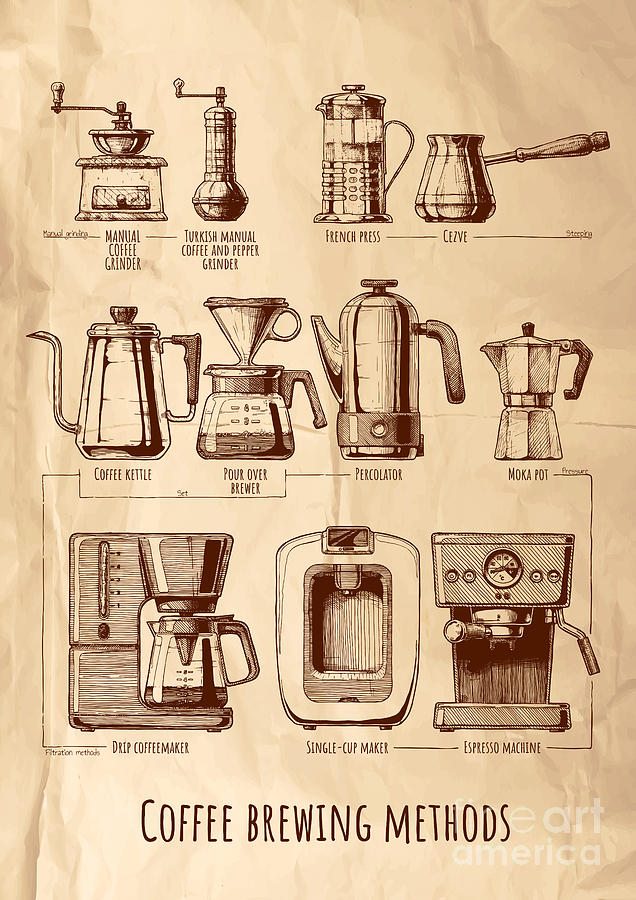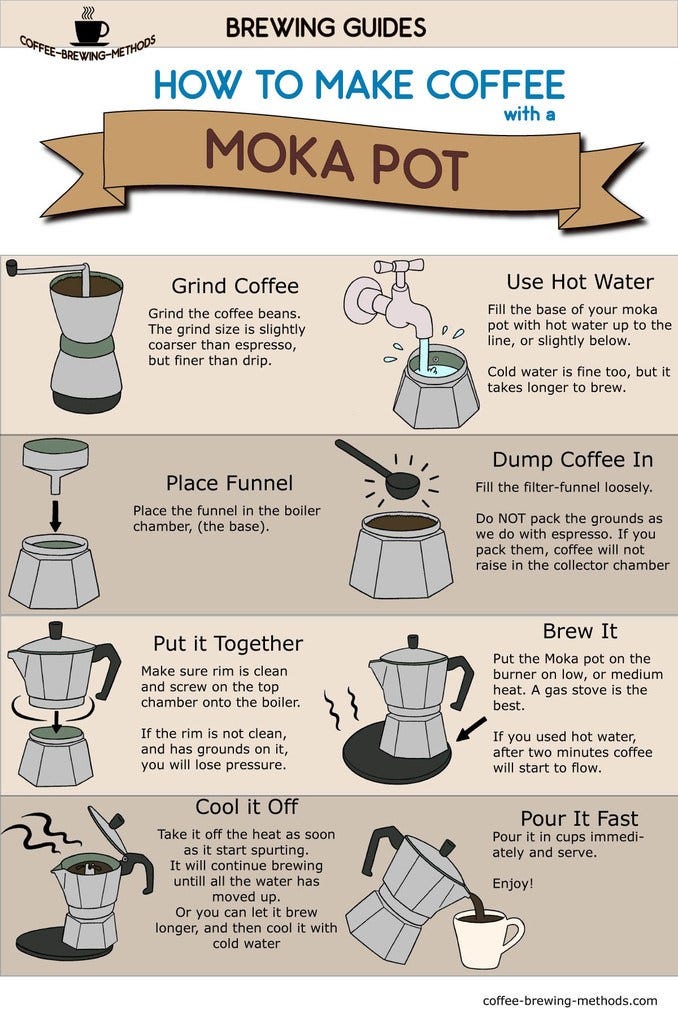Coffee Brewing Methods: Unlocking the Secrets to the Perfect Cup at Home
Coffee Brewing Methods: Unlocking the Secrets to the Perfect Cup at Home
Blog Article
The Scientific Research Behind Coffee Brewing: Exactly How Temperature and Time Affect Your Beverage
Understanding the science behind coffee brewing reveals that temperature and time are not mere variables yet crucial components that determine the drink's taste profile and overall quality. The optimal brewing temperature level typically drops in between 195 ° F and 205 ° F, while the duration of extraction varies significantly across various techniques. This interplay of factors can result in a cup that is either fascinating or unsatisfactory. As we discover the nuances of these components, the inquiry occurs: how can one effectively balance temperature and time to attain that perfect brew?
The Chemistry of Coffee Extraction
The chemistry of coffee extraction explores the elaborate processes that change raw coffee beans right into the fragrant drink appreciated worldwide. This improvement primarily includes the solubility of different compounds present in the beans, which are influenced by factors such as work dimension, water top quality, and the developing technique utilized.
Throughout the developing process, warm water functions as a solvent, removing soluble compounds, consisting of high levels of caffeine, sugars, acids, and lipids, from the coffee premises. Each substance adds to the flavor account, aroma, and body of the last beverage. Acids are responsible for brilliant and zesty notes, while oils contribute to a rich mouthfeel.
The preliminary stages of developing extract acids and sugars, leading to a pleasant acidity, while extended extraction can lead to anger due to over-extraction of unwanted compounds. Comprehending these chemical interactions is important for enhancing brewing techniques, as the balance between extraction time and water temperature level can significantly affect the general high quality of the coffee.
Suitable Brewing Temperatures
Discovering the ideal developing temperature is necessary for opening the complete potential of coffee flavors and aromas - coffee brewing methods. Study indicates that the optimal array for brewing coffee lies between 195 ° F to 205 ° F(90 ° C to 96 ° C) Within this array, the extraction procedure properly liquifies the preferable soluble substances in coffee beans, resulting in a well balanced and flavorful cup
Developing at reduced temperatures, such as listed below 195 ° F(90 ° C ), may lead to under-extraction, yielding an acidic and weak mixture with muted tastes. On the other hand, brewing at temperature levels surpassing 205 ° F(96 ° C) can lead to over-extraction, producing a bitter and harsh taste as a result of the extreme dissolution of unfavorable compounds, such as tannins.
Moreover, the optimal brewing temperature can vary depending upon the coffee bean type and roast level. For example, lighter roasts usually take advantage of somewhat greater temperatures to boost their intricate taste profiles, while darker roasts may be much better suited to lower temperature levels to reduce resentment.
Inevitably, preserving precision in developing temperature levels is crucial for achieving an unified balance of tastes, ensuring that every mug of coffee provides an enjoyable sensory experience.
Impact of Brewing Time
Developing time plays a crucial role in determining the taste profile and total top quality of coffee. Much shorter developing times can investigate this site result in under-extraction, leading to a sour or weak taste, as not adequate soluble compounds are liquified.
Optimal developing time varies depending on the technique used and the grind size of the coffee. As an example, a French press generally requires concerning four mins, while espresso extraction is generally finished within 25 to 30 seconds. It is important to adjust brewing time in combination with other variables, such as water temperature level and coffee-to-water ratio, to accomplish the wanted flavor account.
Understanding the influence of brewing time makes it possible for coffee enthusiasts to improve their developing techniques, inevitably boosting the sensory experience of their cup (coffee brewing methods). With mindful attention to this variable, one can open the complete capacity of the coffee, disclosing its distinct attributes and nuances
Brewing Techniques and Their Results

As an example, approaches like French press and cold brew enable a web longer steeping time, leading to a fuller body and robust flavor as a result of increased removal of oils and soluble solids. Alternatively, coffee developing makes use of high stress and a shorter extraction time, producing a concentrated shot that highlights intense flavors and a rich crema.
Pour-over techniques, such as Chemex or V60, provide a more controlled removal procedure, enabling the brewer to control flow rate and water circulation, which can boost illumination and quality. At the same time, percolation approaches cycle water via the coffee premises numerous times, leading to a more powerful, often bitter taste.
Last but not least, making use of paper filters versus metal filters can see this page also affect the last preference; paper filters normally generate a cleaner cup by capturing oils and fine particles, while steel filters enable more oils to pass through, adding to a fuller mouthfeel - coffee brewing methods. Comprehending these subtleties can boost the coffee experience dramatically
Tips for Improving Your Brew
A well-executed brew can change even the most basic coffee into a remarkable experience. Grind the beans simply before brewing to maximize quality, guaranteeing the grind size matches your developing method-- coarser for French press and finer for coffee.
Water quality plays a vital function; use filteringed system water devoid of pollutants. The perfect developing temperature varies between 195 ° F and 205 ° F(90 ° C to 96 ° C ) As well warm can burn the coffee, while as well cool may under-extract tastes.
Timing is equally crucial. For immersion methods, steeping for three to 5 mins is optimum, whereas drip methods normally take about five minutes. Explore mixture times to discover your favored toughness.

Conclusion
In summary, the detailed partnership in between temperature level and time is paramount in the coffee developing procedure. Sticking to optimal brewing temperatures between 195 ° F and 205 ° F, together with accurate timing customized to every approach, makes certain the wanted flavor account is accomplished. Recognizing these clinical principles equips individuals to refine their developing techniques, eventually causing a much more pleasurable and balanced coffee experience. Proficiency of these variables is essential for any coffee fanatic looking for excellence in their drink.
Comprehending the scientific research behind coffee developing reveals that temperature level and time are not simple variables but pivotal components that dictate the drink's flavor profile and overall high quality. Comprehending these chemical interactions is critical for enhancing developing methods, as the equilibrium between extraction time and water temperature level can considerably affect the general top quality of the coffee.Brewing time plays an essential role in determining the taste profile and general top quality of coffee. By focusing on these aspects-- bean top quality, grind size, water temperature, soaking time, and proportion-- you can elevate your coffee developing procedure, resulting in a regularly remarkable mug.
In summary, the complex partnership between temperature level and time is critical in the coffee developing procedure.
Report this page